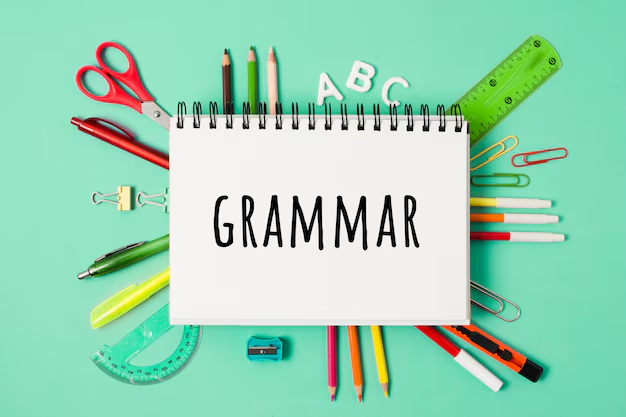English Grammar Class 7 & 8
- Home
- English Grammar Class 7 & 8

Introduction to Basic Grammar:
Nouns:
- Types of Nouns: ( Common, Proper, Collective, Abstract, Material)
- Countable and Uncountable Nouns: Usage and Examples
- Possessive Nouns: Singular and Plural Possession
- Noun Clauses: Introduction and Use in Sentences
Pronouns:
- Types of Pronouns: (Personal, Possessive, Reflexive, Demonstrative, Indefinite, Interrogative)
- Relative Pronouns: (who, whom, whose, which, that (and their use in complex sentences)
- Pronoun-Antecedent Agreement
- Emphatic Pronouns: Emphasis in sentences
Adjectives:
- Types of Adjectives: (Descriptive, Quantitative, Demonstrative)
- Degrees of Comparison: Positive, Comparative, Superlative (with irregular forms)
- Adjective Phrases: Function and Use in Sentences
Verbs:
- Types of Verbs: Action, Linking, Auxiliary Verbs
- Tenses:
- Simple: Present, Past, Future
- Continuous: Present, Past, Future
- Perfect Tenses: Present Perfect, Past Perfect, Future Perfect
- Perfect Continuous Tenses
- Subject-Verb Agreement: With Complex Subjects
- Modal Verbs: can, could, may, might, must, ought to, shall, will, should
- Irregular Verbs: Advanced Practice
- Phrasal Verbs: Commonly Used Phrasal Verbs (e.g., give up, break out, look after)
- Active and Passive Voice
Adverbs:
- Types of Adverbs: Manner, Time, Place, Frequency, Degree
- Adverbs of Degree: (almost, quite, very, too, enough)
- Position of Adverbs: Rules for Placement in Sentences
- Comparative and Superlative Adverbs
Prepositions:
- Prepositions of Place, Time, and Direction: (in, on, at, into, towards)
- Prepositional Phrases: Expansion and Placement in Sentences
- Advanced Prepositions: With complex phrases and clauses
Conjunctions:
- Types of Conjunctions:
- Coordinating Conjunctions: and, but, or, so, for, yet
- Subordinating Conjunctions: although, because, since, unless
- Correlative Conjunctions: either/or, neither/nor, both/and
- Compound and Complex Sentences: Use of Conjunctions in sentence formation
Articles:
- Definite and Indefinite Articles: Rules for Usage
- Omission of Articles: Where Articles are not Required
- Special Cases with Articles: Use before Unique Nouns, Nationalities, and Languages
Punctuation:
- Advanced Punctuation: Use of the Comma, Semicolon, and Colon
- Quotation Marks: In Direct and Indirect Speech
- Apostrophe: For Possession and Contractions
- Capitalization: Titles, Proper Nouns, Beginnings of Sentences
Clauses:
- Types of Clauses: Independent and Dependent Clauses
- Noun Clauses, Adjective Clauses, Adverb Clauses: Functions in Sentences
- Relative Clauses: Defining and Non-Defining Clauses
Sentences:
- Simple, Compound, and Complex Sentences: Identification and Formation
- Analysis and Transformation of Sentences
- Conditional Sentences: Types 1, 2, and 3
- Sentence Connectors: (however, therefore, moreover)
Direct and Indirect Speech:
- Rules for Conversion: Changing Tenses, Pronouns, and Time Expressions
- Reporting Verbs: Usage in Reporting Speech
- Commands, Questions, and Statements in Reported Speech
Active and Passive Voice:
- Conversion Rules: From Active to Passive Voice (and vice versa)
- Use of Passive Voice: Focus on the Action, Not the Subject
Vocabulary Building:
- Synonyms and Antonyms
- Homophones and Homonyms
- Prefixes and Suffixes: Word Formation and Usage
- Idioms and Phrases: Commonly Used Expressions
- Collocations: Words that Commonly Appear Together
Writing and Composition:
- Paragraph Writing: Using Correct Grammar and Sentence Structures
- Letter Writing: Formal and Informal Letters
- Essay Writing: Coherence, Unity, and Grammar
- Story Writing: Focus on Grammar, Punctuation, and Sentence Variety
- Comprehension Exercises: Reading and Grammar Skills Integration


